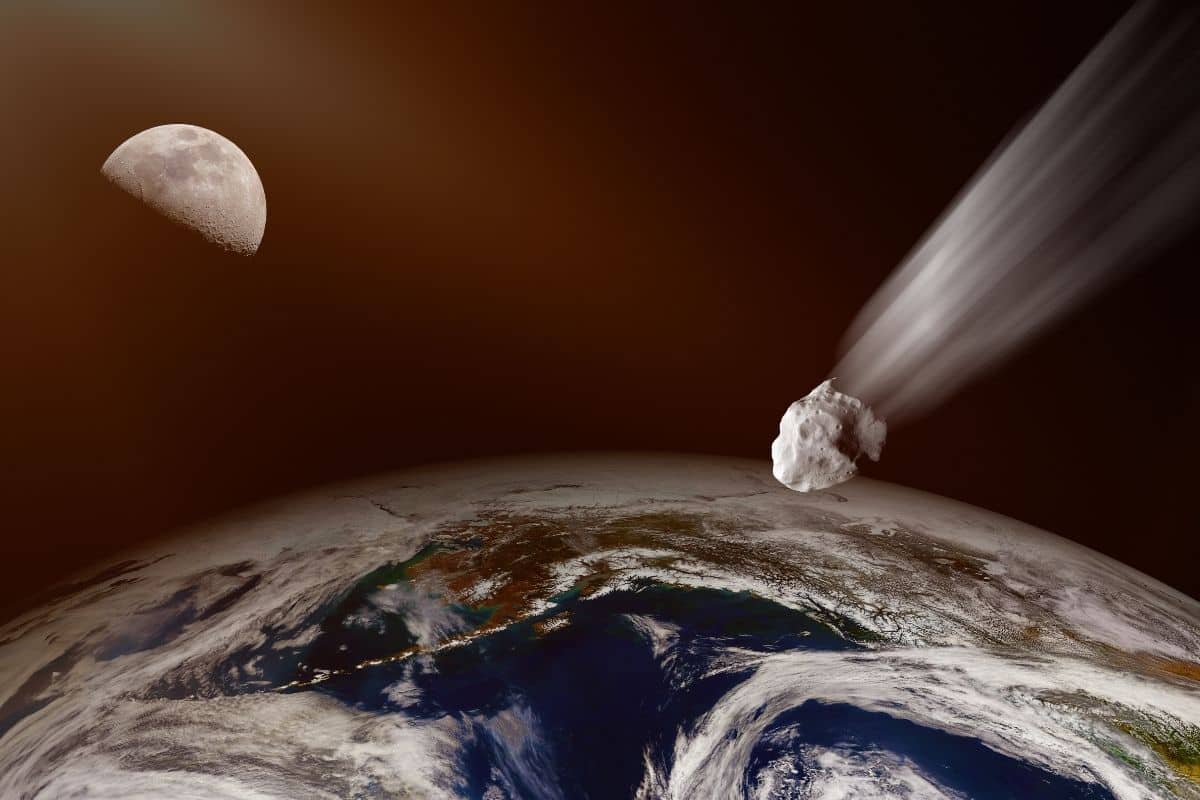
The nearer will pass our planet at ‘only’ 89,000 kilometers.
Only a few days ago, space rock 2022 NF came into the crosshairs of astronomers. And today it will soar close to the earth. By the way, you don’t have to worry, nothing seems like 2022 NF is on a collision course with our planet. However, astronomers will seize the opportunity to study this space rock more closely.
2022 NF
The space rock has been given the name 2022 NF. Researchers estimate that 2022 NF will have a diameter of between five and 12 meters. This makes it about the size of a small city bus.
Discovery
2022 NF was discovered on July 4, 2022 using Pan-STARRS. Pan-STARRS consists of two telescopes located on the Hawaiian shield volcano Haleakala and has been entrusted with the important task of scanning the night sky for potentially dangerous asteroids. It soon became clear that 2022 NF was not just a space rock, but a real near-Earth, which would treat our Earth to a visit within a few days.
Closest approach
Astronomers have calculated that the nearer will come closest to Earth today, at around 4 o’clock. 2022 NF will pass our planet at a distance of ‘only’ 89,000 kilometers. And for your imaging, that means the space rock is getting closer than the moon. For example, we find our natural satellite at a distance of 384,400 kilometers from Earth. This also means that 2022 NF will skim ‘closely’ past the Earth in cosmic terms.

The orbit of space rock 2022 NF along Earth. Image: The Virtual Telescope Project
The space rock is in quite a hurry. For example, 2022 NF will rush past at a speed of more than 11 kilometers per second (or 40,000 kilometers per hour).
collision course
Fortunately, although the space rock comes relatively close, we don’t have to worry: 2022 NF is not on a collision course with Earth. If that had been the case, however, it would not have had any devastating consequences due to its small size. The asteroid would likely have disintegrated high in the atmosphere, leading to a bright meteor that we could have seen from Earth as a large, bright fireball. This also happens regularly.
Potentially dangerous
In addition, 2022 NF also does not meet NASA’s criteria for a “potentially dangerous asteroid” due to its small size. This generally refers to space rocks that are at least 140 meters in size and pass the Earth at a distance of less than 8 million kilometers. Although the newly discovered space rock does skim past Earth well within that distance, it is far too small to be classified as dangerous.
The fact that astronomers were able to detect the space rock despite the small size of 2022 NF shows that scientists have increasingly improved techniques that can reveal even the smaller near-Earth objects. And that is very important. Because although 2022 NF is not a threat, it could just be that in the future a space rock unexpectedly heads towards Earth that may cause considerable damage. Scientists are therefore doing everything they can to map the existing asteroids and calculate their orbits, so that we are well prepared if one is on a collision course with Earth. But rest assured: at this time, no asteroids are known to pose a serious threat for the next 100 years.
Source material:
†Near-Earth Asteroid 2022 NF extremely close encounter: online observation – 6July 2022” – The Virtual Telescope Project
†Next Five Asteroid Approaches” – NASA Jet Propulsion Laboratory
†Small-Body Database Lookup” – NASA
Image at the top of this article: guvendemir from Getty Images Signature (via canva.com)